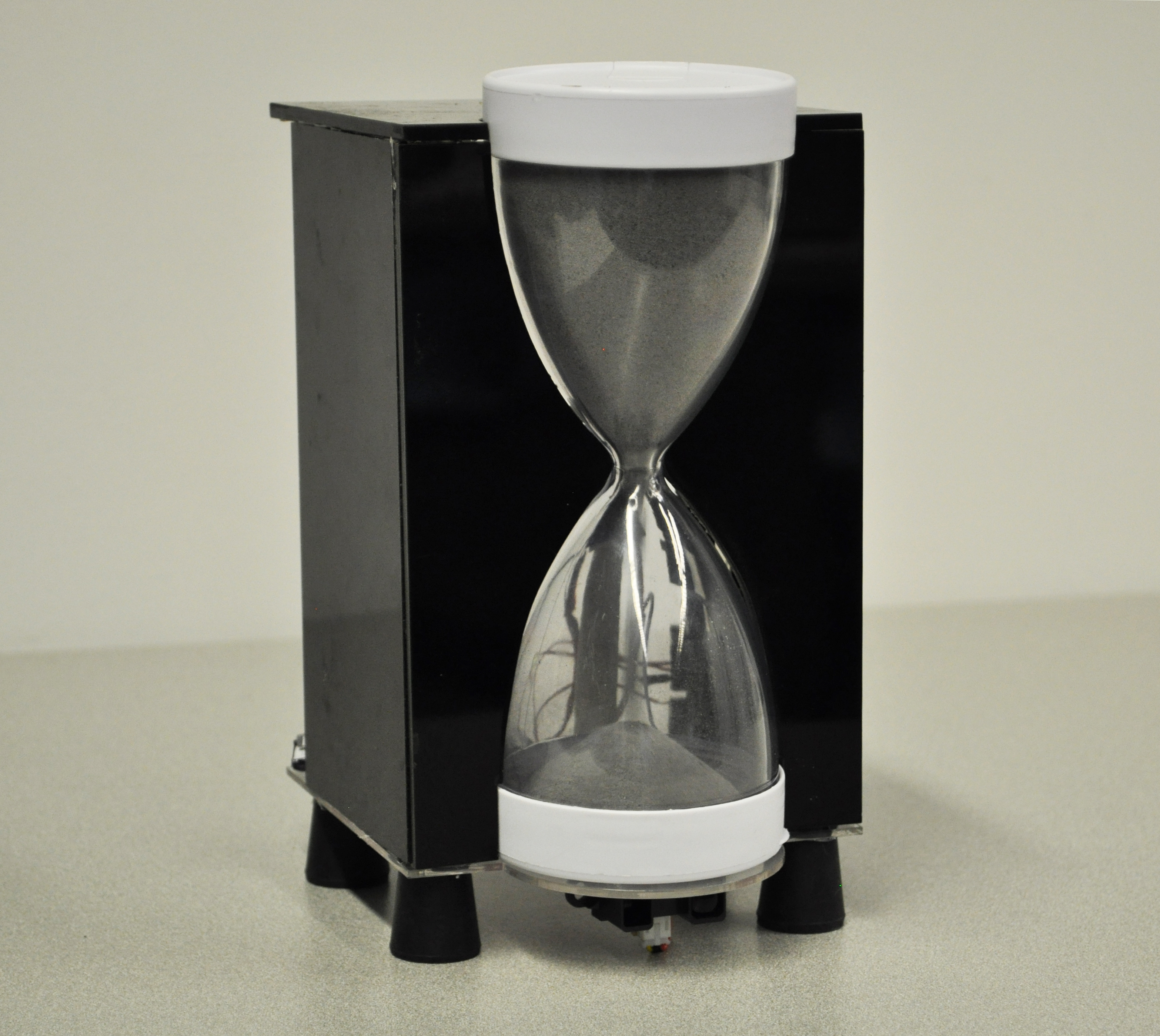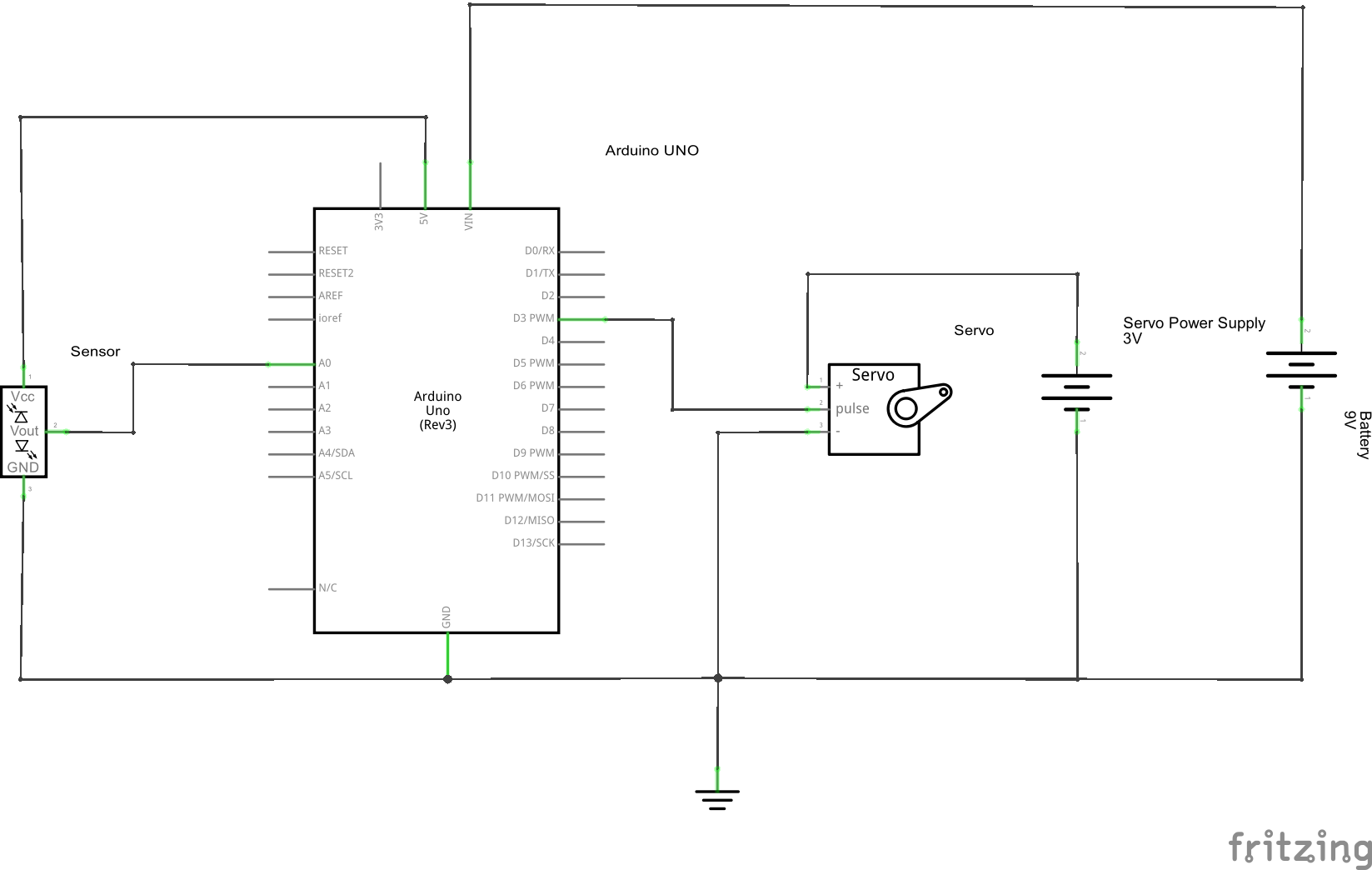1B-Arduino Project-The Time Out
|
Group Members: Duncan McIsaac, Gwen Sadler, Marc-Daniel Julien, Lauren Valley
Roles: Tutor: Marc-Daniel Julien, Designer: Gwen Sadler, Integrator: Duncan McIsaac, Scribe: Lauren Valley Overview: Our perceptions of time seem to have a strangle-hold on our minds—and so we rush, because in the end, there was never enough time—What if instead we took a step back, realized how absurdly complex and inconsistent this variable of time is? Our device, The Time Out is a tool to spark the viewer’s questioning of the role that time will play in their life, and give them more time to reflect. In order to operate it, the user is instructed to sit and think while the sand in The Time Out slowly dissipates. However, this isn’t any ordinary hourglass. The Time Out’s clever sensor is programmed to detect an approaching person, and as the person moves closer, the sand slows to a stop. Little does the user know, attempting to watch time only slows it down, but when the person is able to take a step back and reflect on their situation, the passage of time is returns to normal and The Time Out is able to provide a sufficient amount of reflection time.
Video: The Hourglass:
Technical Notes:
The Time Out utilizes a servo motor with a magnet attached to the arm to enable a moving magnetic field. The servo has two positions—one at 87 degrees, stops the iron filings from flowing, while the other, at 45 degrees, allows the iron to flow. Because the proximity sensor has a range of about 1 meter, and isn’t very stable, we chose to use it as a binary indicator as to whether someone is there or not. When the sensor is activated, the servo sweeps slowly to 87 degrees, restricting the rate of flow. If the person then leaves, the servo sweeps back slowly.
Schematic Diagram: |


